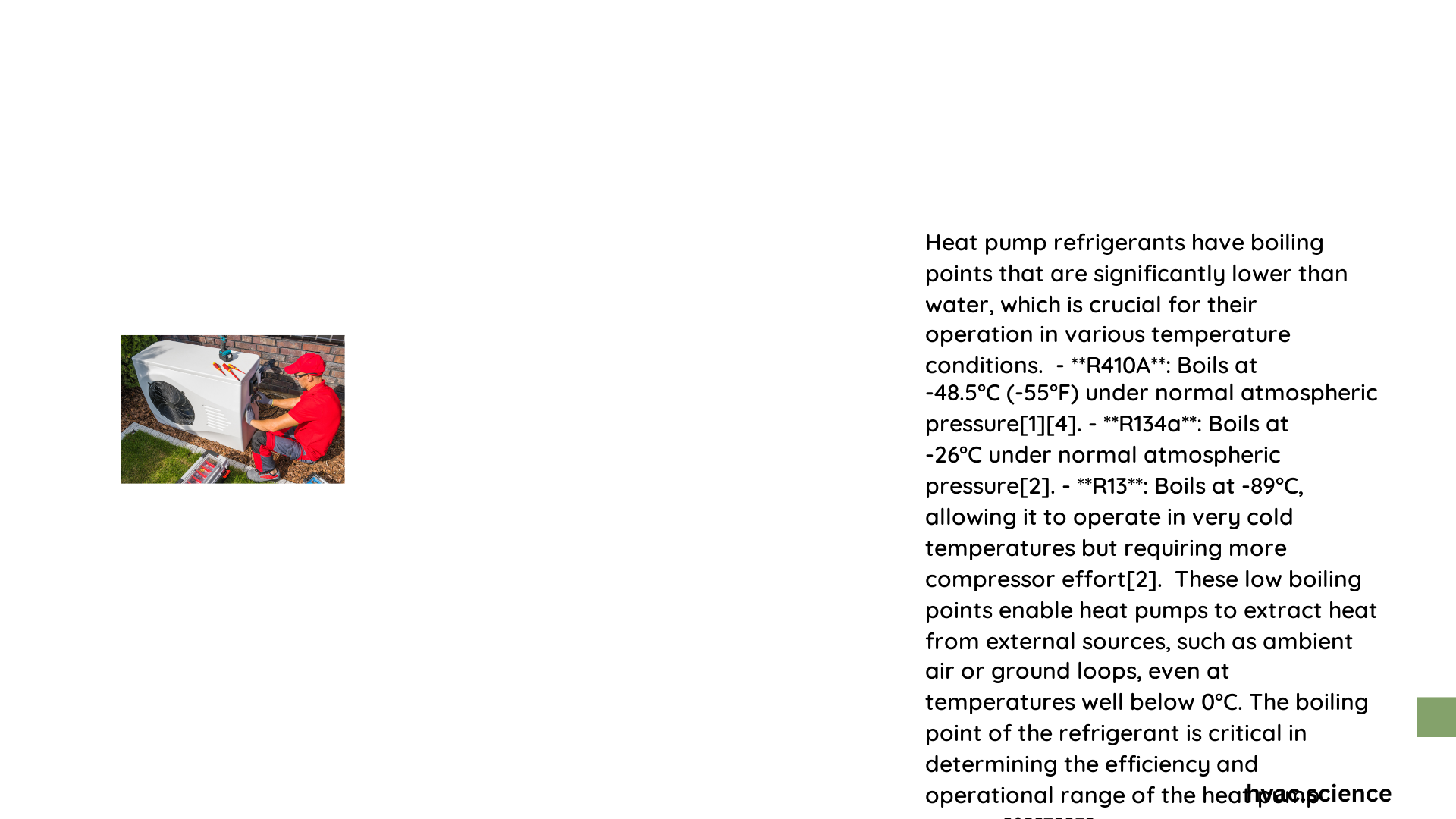Heat pump refrigerant boiling points are fundamental determinants of thermal transfer efficiency, directly influencing system performance across various temperature ranges. Understanding these critical thermodynamic properties enables engineers and technicians to select optimal refrigerants for specific cooling and heating applications, balancing energy consumption, heat exchange capabilities, and environmental considerations.
What Makes Refrigerant Boiling Point Critical?
Refrigerant boiling point represents the temperature at which a liquid transitions into a gaseous state, a crucial phase change mechanism in heat pump systems. This transformation enables heat absorption and release, driving the fundamental heat transfer process.
How Do Different Refrigerants Compare?
| Refrigerant | Boiling Point | Typical Application |
|---|---|---|
| R-410A | -61.9°F (-51.6°C) | High-efficiency residential/commercial cooling |
| R-134A | -14.9°F (-26.1°C) | Automotive and medium-temperature refrigeration |
What Factors Influence Refrigerant Performance?

Key performance factors include:
- Thermodynamic Properties
- Phase transition temperature
- Pressure characteristics
-
Heat transfer efficiency
-
System Compatibility
- Compressor design requirements
- Operating pressure ranges
- Material interaction potential
Why Does Boiling Point Matter?
The boiling point directly impacts:
- Heat Transfer Efficiency
- Energy Consumption
- System Design Complexity
- Performance in Varied Environments
How Does R-410A Demonstrate Superior Performance?
R-410A exhibits remarkable characteristics:
– Lower boiling point enables faster heat absorption
– Higher pressure capacity
– Enhanced cooling potential in hot climates
– Improved coefficient of performance (COP)
What Challenges Exist with Refrigerant Selection?
Selecting appropriate refrigerants involves navigating:
– Environmental regulations
– Global warming potential
– Ozone depletion considerations
– Long-term system sustainability
Can Boiling Point Predict System Efficiency?
While boiling point provides critical insights, total system efficiency depends on:
– Compressor design
– Heat exchanger configuration
– Ambient temperature conditions
– Refrigerant thermodynamic properties
Technical Recommendations
- Prioritize refrigerants with optimal boiling points for specific applications
- Consider environmental impact alongside performance metrics
- Conduct comprehensive system modeling
- Evaluate long-term operational costs
Emerging Trends in Refrigerant Technology
Modern research focuses on:
– Low global warming potential alternatives
– Enhanced synthetic refrigerant compositions
– Natural refrigerant development
– Improved energy efficiency strategies
Practical Considerations for Professionals
- Regular system performance monitoring
- Understanding refrigerant phase transition characteristics
- Staying updated on technological advancements
- Implementing sustainable cooling solutions
Conclusion
Heat pump refrigerant boiling points represent a complex interplay of thermodynamic principles, system design, and environmental considerations. Professionals must approach refrigerant selection holistically, balancing technical performance with sustainability goals.
